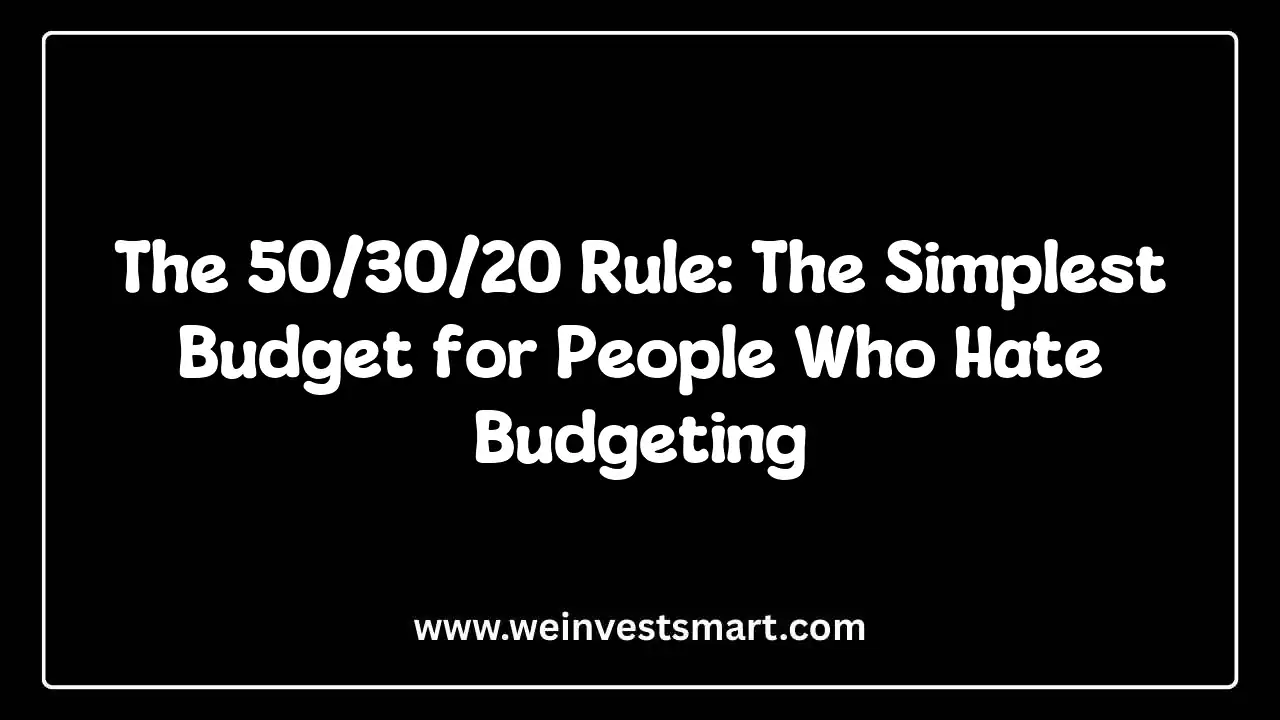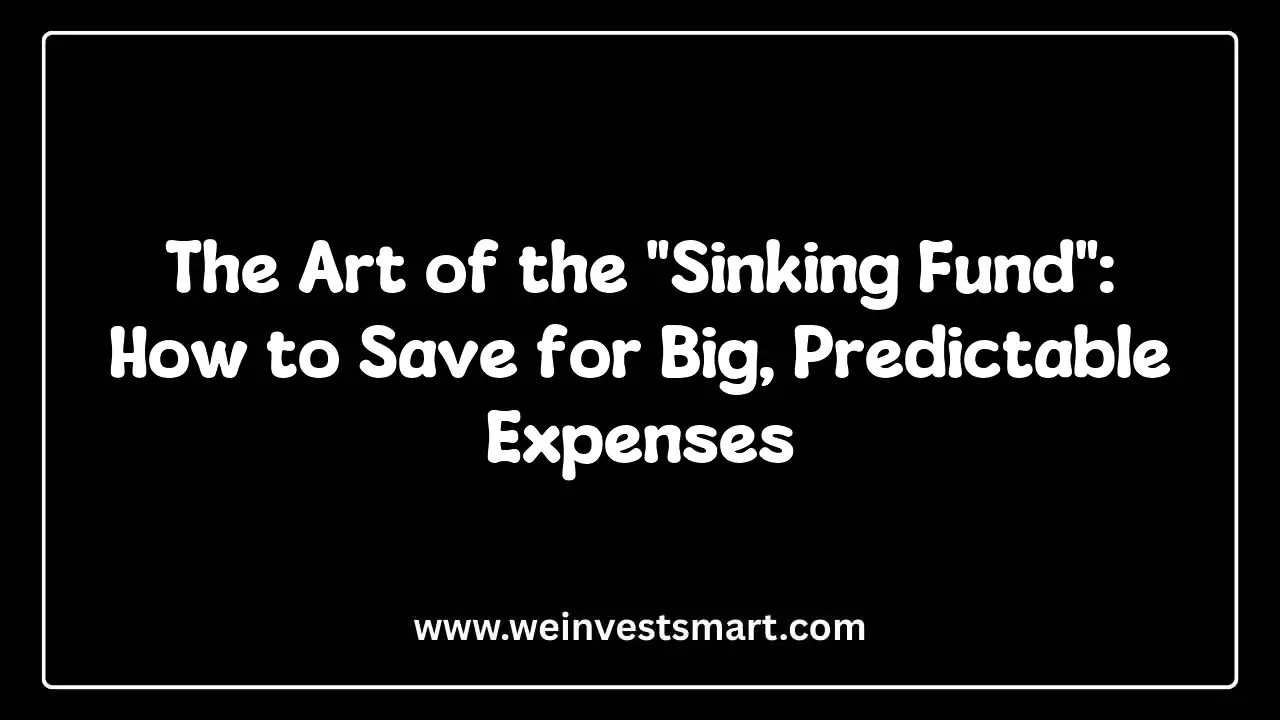· Michael Chen · personal-finance · 8 min read
The Complete Personal Budgeting Guide: Take Control of Your Finances
Master the art of budgeting with our comprehensive guide. Learn proven budgeting methods, track your expenses, and build a sustainable financial plan.
Most people think budgeting is about restricting yourself and living like a miser. But here’s the uncomfortable truth: a well-designed budget actually gives you more freedom, not less. Going straight to the point, budgeting is about making intentional choices with your money so you can spend on what matters most to you. You get the gist: it’s not about deprivation; it’s about empowerment and peace of mind.
Why Budgeting Matters: The Financial Reality We Face
We live in a world where 64% of Americans live paycheck to paycheck. But what do we mean by that? In other words, most people are one unexpected expense away from financial disaster. Going straight to the point, budgeting isn’t just a nice-to-have skill—it’s essential for financial survival and success.
Here’s where things get interesting: people who budget save 19% more than those who don’t. That is to say, budgeting isn’t about being cheap; it’s about being smart with your money. In fact, the funny thing is that once you start budgeting, you’ll wonder why you didn’t start sooner.
The Benefits That Will Surprise You
- Clarity: Know exactly where your money goes (no more wondering where your paycheck disappeared)
- Control: Make intentional spending decisions instead of impulsive ones
- Freedom: Fund your dreams and goals without financial stress
- Peace of Mind: Sleep better knowing you’re prepared for life’s surprises
This sounds like a trade-off, but it’s actually a desirable thing: we covet this financial control because it allows us to live life on our terms.
You may also be interested in: Taxes for Newbies: Understanding Your Paycheck Stub and Basic Tax Deductions
Step 1: Calculate Your Net Income—The Foundation
Before you can allocate your money, you need to know how much you actually have. Going straight to the point, your net income is what you take home after taxes and deductions, not your gross salary.
For Salaried Employees
Take your monthly take-home pay and subtract any automatic deductions. In fact, this is the money you can actually spend or save.
For Variable Income
If your income fluctuates, use the lowest month as your baseline. That is to say, budget based on your worst-case scenario, then save the surplus from good months.
You may also be interested in: Rent vs. Buy: The Real Math Behind the Biggest Financial Decision of Your Life
Step 2: Track Your Current Spending—Knowledge is Power
You can’t manage what you don’t measure. Going straight to the point, tracking your spending for at least a month reveals patterns you never knew existed. In fact, most people are shocked by how much they spend on small, unnecessary items.
Tracking Methods That Actually Work
Apps and Tools:
- Mint, YNAB, or Personal Capital for automatic categorization
- Spreadsheets for complete customization
- Bank statements for a reality check
The Manual Method: Some people swear by pen and paper. Going straight to the point, writing down every expense creates awareness and accountability.
Categorizing Your Spending
Fixed Expenses (The Non-Negotiables):
- Rent/Mortgage
- Insurance premiums
- Minimum debt payments
- Utilities
- Phone/Internet
Variable Expenses (The Flexible Ones):
- Groceries
- Transportation
- Medical costs
- Household supplies
Discretionary Spending (The Fun Stuff):
- Dining out
- Entertainment
- Shopping
- Subscriptions
- Hobbies
You may also be interested in: 7 Common Tax Deductions You Might Be Missing Out On
Step 3: Choose Your Budgeting Method—The Right Tool for the Job
Not all budgets are created equal. Going straight to the point, different methods work for different personalities and lifestyles. That is to say, find the one that you’ll actually stick with.
The 50/30/20 Rule: Simplicity at Its Best
Perfect for beginners who want straightforward guidelines. Going straight to the point, allocate your after-tax income as follows:
- 50% Needs: Essential expenses you can’t avoid
- 30% Wants: Entertainment and lifestyle choices
- 20% Savings & Debt: Emergency fund and debt repayment
Example: On $4,000 monthly income:
- Needs: $2,000
- Wants: $1,200
- Savings/Debt: $800
Zero-Based Budgeting: Every Dollar Has a Job
This method forces intentionality. Going straight to the point, your income minus all expenses and savings should equal zero. That is to say, you assign every dollar a specific purpose before the month begins.
How to Implement:
- List your monthly income
- Assign every dollar to categories
- Adjust until you reach zero
- Track spending throughout the month
Envelope Method: Cash-Based Discipline
Use physical envelopes for different spending categories. Going straight to the point, when the envelope is empty, you’re done spending in that category for the month.
Digital Version: Use budgeting apps with virtual envelopes if you prefer cards over cash.
Pay Yourself First: The Mindset Shift
Treat savings like a bill that must be paid. Going straight to the point, set up automatic transfers to savings before you spend on anything else. In fact, this method works because it removes decision-making from the equation.
You may also be interested in: The Beginner’s Guide to Using Credit Cards Responsibly (And Why You Should)
Step 4: Build Your Emergency Fund—The Financial Safety Net
Before focusing on other goals, establish an emergency fund. Going straight to the point, this is money for life’s unexpected events, not vacations or shopping sprees.
Start Small, Think Big
- Initial Goal: $1,000 for immediate peace of mind
- Full Fund: 3-6 months of living expenses
- Location: High-yield savings account (currently 4-5% interest)
What Counts as an Emergency?
Yes:
- Job loss
- Major car or home repairs
- Medical emergencies
- Family crises
No:
- New clothes
- Restaurant meals
- Concert tickets
- Regular expenses you forgot to budget for
This sounds like a trade-off, but it’s actually a desirable thing: we covet this financial security because it allows us to handle life’s curveballs without debt.
You may also be interested in: Lifestyle Creep: The Silent Killer of Wealth (And How to Combat It)
Common Budgeting Challenges and Solutions
Irregular Income
Problem: Variable pay makes consistent budgeting difficult Solution: Use lowest month as baseline, save surplus from good months
Unexpected Expenses
Problem: Life happens, budgets get derailed Solution: Include 5-10% buffer category, build emergency fund faster
Partner Differences
Problem: Spouses have different spending styles Solution: Communicate openly, find common ground, allow individual fun money
Feeling Restricted
Problem: Budgeting feels like punishment Solution: Include fun money, focus on goals, remember freedom comes from control
Advanced Budgeting Strategies
The 80/20 Budget
Save/invest 20% automatically, spend remaining 80% freely. Going straight to the point, this works for people who hate detailed tracking but want to save consistently.
Anti-Budget
Pay savings and bills first, spend the rest guilt-free. In fact, this method works well for disciplined spenders who need flexibility.
Percentage-Based Budgeting
Ideal for variable income: Housing 25-30%, Transportation 15%, Food 10-15%, Savings 20%, Everything else 20-30%.
Budgeting Tools and Apps
Free Options
Mint: Automatic transaction categorization and bill reminders Personal Capital: Investment tracking with budgeting features
Paid Options
YNAB (You Need A Budget): Zero-based budgeting with excellent education ($14/month) PocketGuard: Prevents overspending with smart categorization
DIY Spreadsheets
Complete customization but requires Excel/Google Sheets knowledge.
Making Your Budget Stick: The Psychology of Success
Review Weekly
Check progress, adjust categories, identify problems early.
Plan for Fun
Include entertainment money, budget for small splurges, don’t be too restrictive.
Be Flexible
Life changes, budgets should too. Focus on long-term trends, not daily perfection.
Automate Everything Possible
Set up automatic bill pay, savings transfers, and investment contributions.
Budget Success Stories: Real People, Real Results
Sarah’s Debt Payoff Journey
Situation: $35,000 credit card debt, $50,000 salary Strategy: 50/30/20 budget with extra debt payments Result: Debt-free in 3 years, now saves 25% of income
Mike’s House Down Payment
Situation: Minimal savings, wanted to buy a home Strategy: Envelope method for spending, automated savings Result: Saved $40,000 down payment in 2 years
Your Budget Action Plan: Get Started Today
Week 1: Assessment
- Calculate net monthly income
- Track all expenses for one week
- Review last 3 months of bank statements
- Identify spending patterns
Week 2: Setup
- Choose budgeting method
- Create spending categories
- Set up tracking system
- Establish initial budget amounts
Week 3: Implementation
- Start following your budget
- Track daily spending
- Set up automatic savings transfers
- Automate bill payments
Week 4: Adjustment
- Review first month’s results
- Identify areas for improvement
- Adjust categories as needed
- Plan for next month
The Bottom Line: Budgeting Changes Everything
Budgeting isn’t about perfection—it’s about progress. Going straight to the point, your first budget won’t be flawless, and that’s okay. The key is starting, learning from experience, and continuously improving.
Remember why you’re budgeting: whether it’s paying off debt, saving for a home, building wealth, or simply reducing financial stress, keep your goals front and center. Every dollar you budget intentionally brings you closer to your dreams.
The best budget is the one you’ll actually use. Start simple, be consistent, and adjust as you learn what works for your lifestyle and goals.
And this is just a very long way of saying that budgeting is about taking control of your financial future. The funny thing is that once you start, you’ll never look back.
Personal Budgeting Guide FAQ
What is budgeting?
Budgeting is the process of creating a plan for your money, tracking income and expenses, and making intentional choices about how to spend and save to achieve financial goals.
Why is budgeting important?
Budgeting is important because it helps you take control of your finances, reduce financial stress, build savings, pay off debt, and work towards long-term financial goals.
What are different budgeting methods?
Common budgeting methods include the 50/30/20 rule, zero-based budgeting, envelope method, pay yourself first, and percentage-based budgeting. Choose one that fits your lifestyle.
How do I create a budget?
To create a budget, calculate your net income, track your expenses for a month, categorize spending, choose a budgeting method, set spending limits, and review and adjust regularly.
How do I stick to a budget?
To stick to a budget, set realistic goals, automate savings and bill payments, track spending regularly, be flexible, and focus on your financial goals for motivation.
This article provides general budgeting guidance and should not be considered personalized financial advice. Your optimal budgeting approach may vary based on your individual circumstances and goals.



